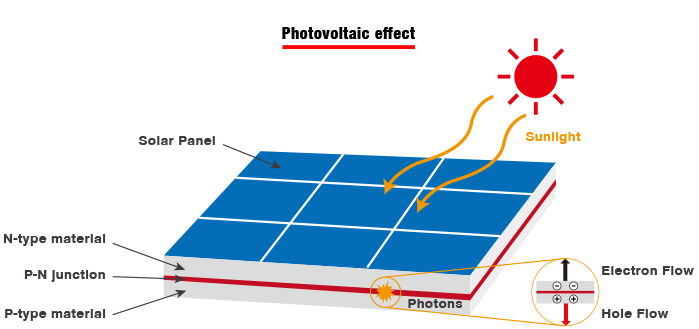
The sun is the ultimate powerhouse, sending an abundance of energy our way every single day. But how do we actually capture that sunlight and turn it into usable electricity? The answer lies in photovoltaic (PV) panels, the backbone of solar energy. If you’ve ever wondered how photovoltaic panels work, let’s break it down in the simplest way possible.
What Are Photovoltaic Panels?
Photovoltaic panels, commonly known as solar panels, are devices designed to convert sunlight into electricity. They do this using photovoltaic cells, which are typically made of silicon, a semiconductor material that can generate an electric current when exposed to sunlight. These panels are used in photovoltaic systems to produce clean, sustainable energy for homes, businesses, and even large-scale solar farms.
How Do Solar Panels Work? The Science behind Photovoltaic Systems
At the heart of every solar panel is the photovoltaic effect, which allows sunlight to be converted into electrical energy. Here’s how it works:
- Absorbing Sunlight: The PV cells in a solar panel absorb sunlight (photons), exciting electrons within the silicon material.
- Creating an Electric Field: The solar cells have two layers of silicon—one positively charged and one negatively charged—creating an electric field.
- Generating Direct Current (DC): When sunlight hits the solar cells, it knocks electrons loose, allowing them to flow through the circuit as direct current (DC) electricity.
- Converting DC to AC: Since most household appliances use alternating current (AC), an inverter converts DC electricity into AC power.
- Powering Homes and Businesses: The converted electricity is then used to power homes, businesses, and can even be stored in solar batteries for later use.
How Efficient Are Photovoltaic Panels?
Efficiency is a key factor in renewable energy basics. Modern solar panels have an efficiency range of 15% to 22%, meaning they convert this percentage of sunlight into electricity. Advancements in photovoltaic technology are pushing these limits further, with research indicating that next-generation panels could exceed 30% efficiency!
Factors Affecting Efficiency:
- Sunlight Intensity: More sunlight means more electricity generation.
- Panel Orientation & Tilt: Proper positioning improves absorption.
- Temperature: Higher temperatures can slightly reduce efficiency.
- Shading: Even partial shading can lower performance.
The Growing Adoption of Solar Energy
China, the U.S., and Germany are leading the charge in solar adoption. In Pakistan, the demand for solar panels is rising due to increasing electricity costs and government incentives for renewable energy solutions.
If you’re interested in how solar energy is transforming economies and communities, check out our blog on Unveiling the Sun’s Secrets: How Solar Panels Harness Natural Energy for a deeper dive into the global solar revolution.
Final Thoughts: Is Solar Energy the Future?
The ability and how photovoltaic panels work to harness clean, renewable energy make them a game-changer for sustainability. As technology advances and costs continue to drop, solar panels will become even more accessible, making it possible for individuals and businesses to embrace energy independence.
The sun provides more than enough energy to power our world—are we ready to take full advantage of it? If you’re thinking about making the switch to solar, now is the perfect time to explore your options!







